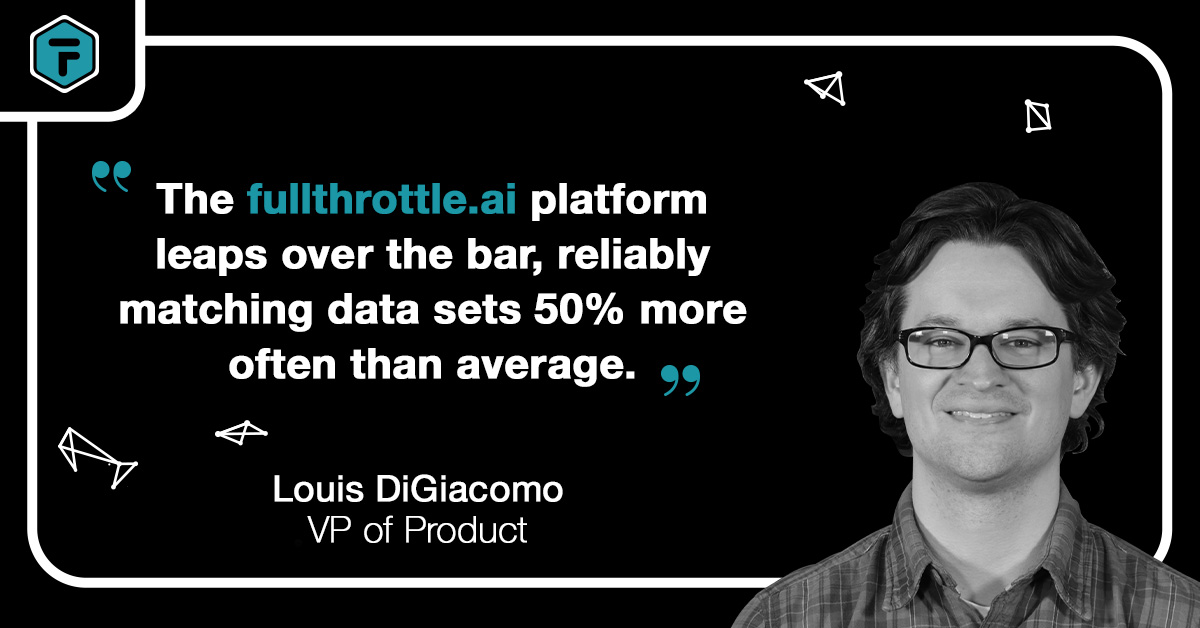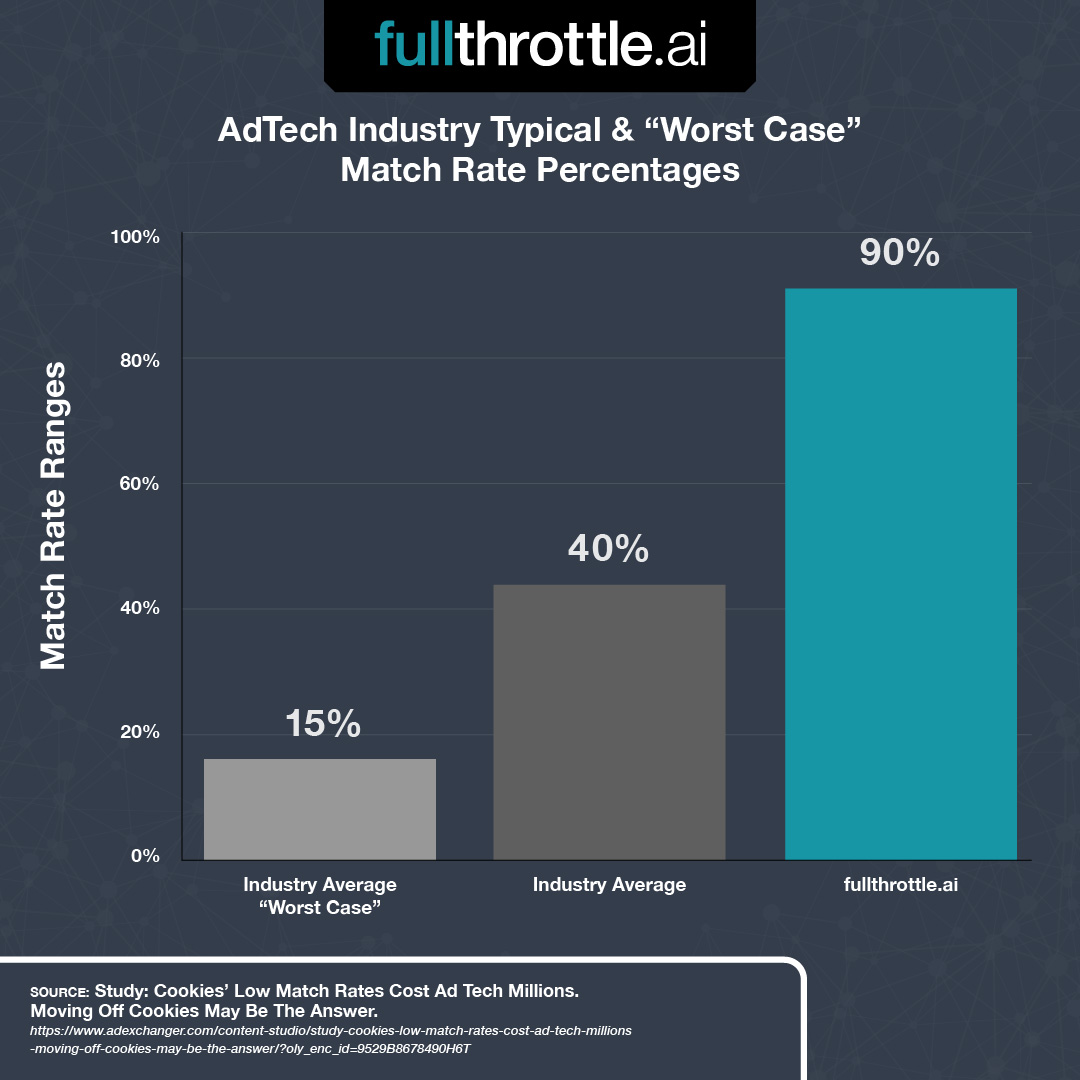
Here’s How We Solved for One of AdTech’s Biggest Headaches
by Lou DiGiacomo, VP of Product
Low match rates have been a thorn in the side of advertisers, publishers, and media companies since the dawn of digital advertising. It's frustrating to invest a significant amount of time, money, and effort into audience-based initiatives, only to have a low match rate dampen the full potential. Since the core value proposition of fullthrottle.ai® is helping brands build and activate first-party audiences, this is a challenge we have faced repeatedly. I want to share our battle-tested experiences to help brands maximize their return on audience.
Key Takeaways:
- Mismatched data signals, lack of data hygiene, and low first-party scale are the key culprits of low match rates.
- Walled gardens, like Google and Facebook, prioritize their closed ecosystems and make it difficult for advertisers to bring their own first-party data to those platforms.
- High match rates should be the standard for all data-driven marketing and can be achieved with the right platform partners in place.
A Portrait of Lost Revenue - The Match Rate Problem

Three-quarters of brands are missing out on about half of their audience when trying to activate them.
A new study illustrates the epidemic of low match rates across the advertising industry. When AdTech professionals were recently asked about their match rates, a majority said their data sets matched about 40% of the time. If that number was boosted just 20%, almost half of respondents said they would expect to see a revenue increase of between one million and fifty million dollars. The fullthrottle.ai® platform leaps over the bar, reliably matching data sets 50% more often than average.
The Common Language Conundrum
Match rates represent the "reachability” of an audience that an advertiser wants to market to. It’s essentially the percentage of your audience that your activation partner is able to reach.
Let's say you have a list of first-party addresses from customers who filled out a form and you want to market to those customers using Facebook ads. You immediately run into a problem: Facebook doesn’t match audience data based on postal addresses. They use mobile ad IDs (MAIDs) as a main identifier in their ad marketplace. The only real solution here is to pay a third-part data company to enrich your data set until a common nomenclature is reached. But by that point, the original first-party data set is watered down with third-party data and match rates will likely still be suboptimal.
We use a lot of video game analogies to make the world of AdTech relatable, so here’s another:
- You speak English and are playing Halo online with someone who speaks Dutch. Neither of you speak the other one’s language.
- With no translator, there is essentially no way for you to effectively communicate and strategize. This is like trying to match a list of postal addresses to a list of Device IDs—two different languages (data types) means there’s no possible match.
- You can use an English-to-Dutch translator to convert your speech into the language of your partner. These translators are not all made equal. There will be misunderstandings in the transcribed instructions as well as a lag from having to use another tool during your game. This is like using a third-party data company to append your first-party audience to.
With quality and recency being key components to success here, your Halo team will be at a serious disadvantage — just like your brand will miss out on a critical revenue opportunity.
Low match rates come from mismatched data signals, a lack of data hygiene, and the stranglehold that walled gardens have on the industry. If you want to improve match rates and maximize returns on audience-based initiatives, dive into the importance of data hygiene.
To read more about match rates, check out the articles below:
How Data Hygiene Unlocks High Match Rates
The Illusion of First-Party Data Control in Walled Gardens







